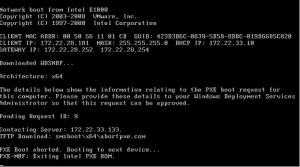How to Overclock Your CPU and GPU for Enhanced Performance


How to Overclock Your CPU and GPU for Enhanced Performance


Introduction
Overclocking your CPU and GPU is a popular method employed by tech enthusiasts and gamers to extract additional performance from their computer hardware. By increasing the clock speeds of these components beyond the manufacturer’s default settings, you can achieve higher processing power and smoother graphics performance, leading to better overall system performance. However, it’s essential to approach overclocking with caution, as it may lead to increased heat generation and potential hardware damage. In this comprehensive guide, we will provide step-by-step tutorials on how to safely overclock your Intel CPU and AMD CPU using MSI Afterburner for the GPU, along with more tips, strategies for different computer models, and recommended programs for boosting performance.
Understanding Overclocking
Overclocking involves adjusting the clock speed and voltage of your CPU and GPU to run at higher frequencies than the ones set by the manufacturer. The CPU clock speed determines how fast the processor performs calculations, while the GPU clock speed affects how quickly it renders graphics. By overclocking, you can achieve a performance boost, especially in resource-intensive tasks like gaming and video editing.
Why Overclocking Requires Caution
Overclocking increases power consumption and generates more heat, which can lead to instability and potential hardware damage if not managed properly. Moreover, overclocking may void your CPU and GPU warranties, so it’s essential to proceed with caution and responsibility.
Step-by-Step Guide to Overclocking Your Intel CPU with MSI Afterburner
Follow these detailed steps to safely overclock your Intel CPU:
Step 1: Research Your CPU and Motherboard
Before starting, research your Intel CPU model and motherboard to understand their overclocking capabilities and safe operating limits. Check the Intel website for information on your specific CPU, and refer to your motherboard’s manual or manufacturer’s website for details on overclocking features.
Step 2: Install MSI Afterburner
Download and install MSI Afterburner from the official website. Although MSI Afterburner is primarily used for GPU overclocking, it also allows basic overclocking of certain Intel CPUs.
Step 3: Enter BIOS/UEFI
Restart your computer and access the BIOS/UEFI settings by pressing the designated key (commonly Del, F2, or F12) during the boot-up process. In the BIOS/UEFI, you can make adjustments to CPU-related settings.
Step 4: Disable Power Limits
Look for options in the BIOS/UEFI related to power limits and thermal throttling. Disable any power limits that may interfere with the overclocking process. This step may vary depending on the motherboard manufacturer, so consult your motherboard’s manual or online guides if needed.
Step 5: Adjust CPU Multiplier
Locate the CPU multiplier or “CPU Ratio” setting in the BIOS/UEFI. The CPU multiplier determines the final clock speed of your CPU. Increase the multiplier in small increments (e.g., 1 or 2) to achieve a higher clock speed. For example, if your CPU’s default multiplier is 40x and the base clock is 100 MHz, increasing the multiplier to 41x will set the CPU speed to 4.1 GHz.
Step 6: Adjust CPU Core Voltage
Increasing the CPU multiplier may require additional voltage for stability. However, higher voltage also results in more heat generation. Increase the core voltage in small increments (e.g., 0.010V or 0.025V) and monitor temperatures closely using monitoring software like HWMonitor.
Step 7: Test Stability
Exit the BIOS/UEFI and boot into Windows. Install stress-testing software like Prime95 and run it to stress-test your CPU at its new clock speed. Monitor temperatures and system stability during the stress test. If the system becomes unstable or temperatures are too high, return to the BIOS/UEFI and lower the CPU multiplier or voltage.
Step 8: Fine-Tuning and Benchmarking
If the stress test passes and your system remains stable, you can fine-tune the overclock further for optimal performance. Run benchmarks and real-world tests to evaluate the performance gains.
Step 9: Save Profiles
Once you find a stable and optimal overclock, save the settings as a profile in MSI Afterburner. This way, you can easily switch between default and overclocked settings whenever needed.
Step 10: Monitor Temperatures
After overclocking, continue to monitor your CPU’s temperatures during heavy usage, especially in resource-intensive tasks like gaming and video rendering. Ensure that the temperatures stay within safe limits to avoid thermal throttling or hardware damage.
Step 11: Back to Default
If you encounter any issues or instability with the overclocked settings, return to the BIOS/UEFI and reset the CPU settings to default values to avoid any potential damage to the CPU.
Step-by-Step Guide to Overclocking Your AMD CPU with MSI Afterburner
Follow these detailed steps to safely overclock your AMD CPU:
Step 1: Research Your AMD CPU and Motherboard
Start by researching your AMD CPU model and motherboard to understand their overclocking capabilities and safe operating limits. Visit the official AMD website for information on your specific CPU, and refer to your motherboard’s manual or manufacturer’s website for details on overclocking features.
Step 2: Install MSI Afterburner
Download and install MSI Afterburner from the official website. Although MSI Afterburner is primarily used for GPU overclocking, it also allows basic overclocking of certain AMD CPUs.
Step 3: Enter BIOS/UEFI
Restart your computer and access the BIOS/UEFI settings by pressing the designated key (commonly Del, F2, or F12) during the boot-up process. In the BIOS/UEFI, you can make adjustments to CPU-related settings.
Step 4: Disable Power Limits
Look for options in the BIOS/UEFI related to power limits and thermal throttling. Disable any power limits that may interfere with the overclocking process. This step may vary depending on the motherboard manufacturer, so consult your motherboard’s manual or online guides if needed.
Step 5: Adjust CPU Multiplier
Locate the CPU multiplier or “CPU Ratio” setting in the BIOS/UEFI. The CPU multiplier determines the final clock speed of your AMD CPU. Increase the multiplier in small increments (e.g., 1 or 0.25) to achieve a higher clock speed. For example, if your CPU’s default multiplier is 40x and the base clock is 100 MHz, increasing the multiplier to 41x will set the CPU speed to 4.1 GHz.
Step 6: Adjust CPU Core Voltage
Increasing the CPU multiplier may require additional voltage for stability. However, higher voltage also results in more heat generation. Increase the core voltage in small increments (e.g., 0.010V or 0.025V) and monitor temperatures closely using monitoring software like HWMonitor or Ryzen Master.
Step 7: Test Stability
Exit the BIOS/UEFI and boot into Windows. Install stress-testing software like Prime95 and run it to stress-test your AMD CPU at its new clock speed. Monitor temperatures and system stability during the stress test. If the system becomes unstable or temperatures are too high, return to the BIOS/UEFI and lower the CPU multiplier or voltage.
Step 8: Fine-Tuning and Benchmarking
If the stress test passes and your system remains stable, you can fine-tune the overclock further for optimal performance. Run benchmarks and real-world tests to evaluate the performance gains.
Step 9: Save Profiles
Once you find a stable and optimal overclock, save the settings as a profile in MSI Afterburner. This way, you can easily switch between default and overclocked settings whenever needed.
Step 10: Monitor Temperatures
After overclocking, continue to monitor your AMD CPU’s temperatures during heavy usage, especially in resource-intensive tasks like gaming and video rendering. Ensure that the temperatures stay within safe limits to avoid thermal throttling or hardware damage.
Step 11: Back to Default
If you encounter any issues or instability with the overclocked settings, return to the BIOS/UEFI and reset the CPU settings to default values to avoid any potential damage to the CPU.
Additional Tips
– Overclocking results may vary depending on the quality of your CPU and motherboard. Not all CPUs are capable of high overclocks, and some motherboards may have better power delivery and cooling solutions for overclocking.
– Overclocking may cause increased power consumption and heat generation. Make sure your system’s cooling solution can handle the extra heat generated by the overclocked CPU.
– Always proceed with caution when overclocking. Gradually increase settings and stress-test your system to ensure stability.
Strategies for Different Computer Models
The process of overclocking may vary slightly depending on your computer’s CPU and motherboard model. Some motherboards offer automatic overclocking features, known as “Auto OC” or “XMP.” For beginners, using these features can be a convenient and safer option. However, manual overclocking allows for more precise control over settings and can yield better results if done correctly.
For example, if you have an Intel CPU with a “K” or “KF” suffix (e.g., Core i9-10900K or i5-11600KF), you have an unlocked multiplier, making it easier to overclock. On the other hand, if you have a non-“K” series CPU (e.g., Core i7-10700 or i3-10100), you may still be able to achieve some overclocking through base clock adjustments.
Recommended Programs for Boosting CPU and GPU Performance
Here are some popular software tools to enhance your CPU and GPU performance:
1. MSI Afterburner
MSI Afterburner is a widely used GPU overclocking tool that works with most graphics cards. It allows you to adjust core clock, memory clock, voltage, and fan speed to optimize performance.
2. EVGA Precision X
EVGA Precision X is another GPU overclocking utility that provides precise control over clock speeds, voltage, and fan settings for EVGA graphics cards.
3. ASUS GPU Tweak
ASUS GPU Tweak is a GPU overclocking utility specifically designed for ASUS graphics cards. It offers similar features to other overclocking tools, allowing you to fine-tune your GPU settings.
4. Intel Extreme Tuning Utility (XTU)
Intel XTU is a CPU overclocking tool specifically designed for Intel processors. It allows you to adjust various CPU parameters, including core voltage, clock speed, and cache settings.
5. AMD Ryzen Master
AMD Ryzen Master is an overclocking tool for AMD Ryzen processors. It provides easy access to CPU settings, including clock speed, voltage, and memory settings.
Conclusion
Overclocking your CPU and GPU can provide a significant performance boost, enhancing your computer’s capabilities for demanding tasks like gaming and content creation. However, it’s essential to proceed with caution, ensuring adequate cooling and monitoring system stability and temperatures. Always remember that overclocking carries risks, and any changes should be done gradually and responsibly. If you’re unsure or uncomfortable with the process, seek guidance from experienced users or avoid overclocking altogether.
Remember that overclocking may void warranties and can potentially cause irreversible damage to your hardware if not done correctly. Proceed at your own risk and take the necessary precautions to ensure a safe and stable overclock.








